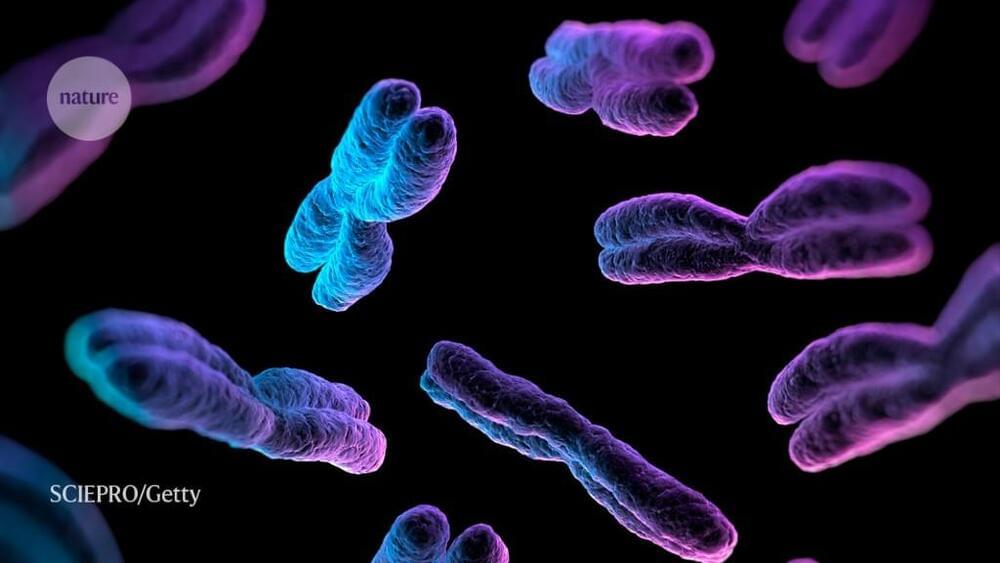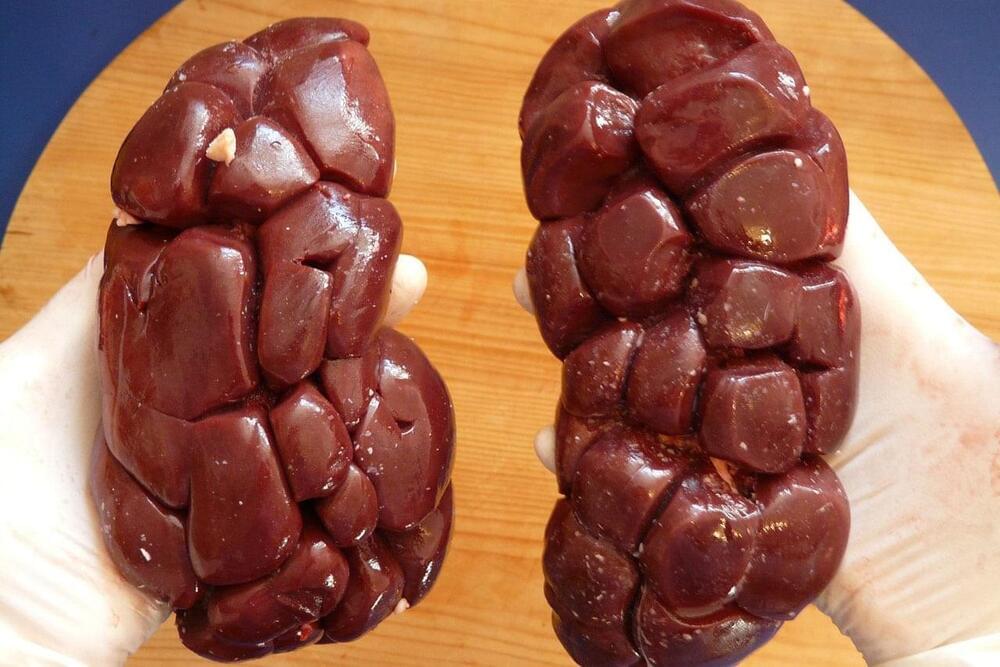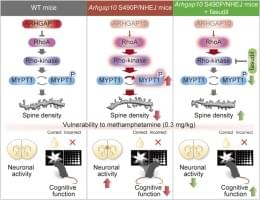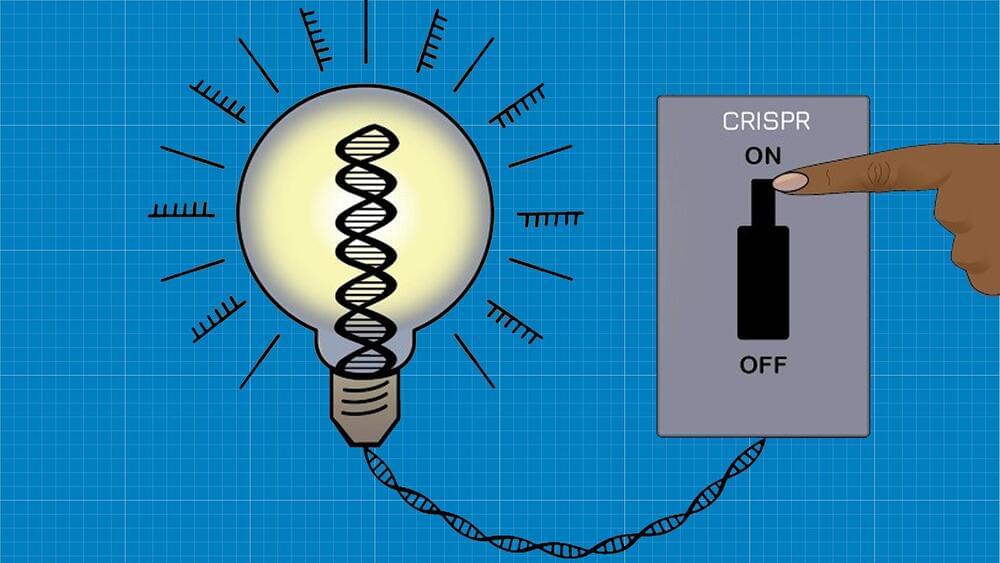Multi-genome assemblies called pangenomes can capture genetic diversity in a species, but researchers are still working out how best to build and explore them.


https://youtube.com/watch?v=QHHrph7zDLw&feature=share
How do viruses make more copies of themselves? They do this by taking over human cells. When a virus infects a cell, it hijacks the protein-making machinery of the cell by releasing its own genetic code, or instructions, into the cell. Now, instead of making proteins for the body, the cell starts working for the virus, helping it replicate. The cell makes more and more virus particles that are released to go on and infect more cells.
Play a Kahoot! trivia game based on this animation: http://www.vaccinemakers.org/trivia.
Watch the related animation, “A Virus Attacks a Cell,” to learn how viruses get into our cells to begin the process of reproduction: https://youtu.be/jkNxmTrrZSk.
Animation created by and for the Vaccine Makers Project.
The Vaccine Makers Project gratefully acknowledges the ongoing collaboration and partnership with XVIVO, creator of medical animations and scientific media: https://xvivo.com.
Copyright © 2016, Medical History Pictures, Inc. All rights reserved.
The Vaccine Makers Project (VMP) is the classroom-based program of the Vaccine Education Center at the Children’s Hospital of Philadelphia (VEC at CHOP). The Center’s team is composed of scientists, physicians, mothers and fathers devoted to the study and prevention of infectious diseases. The Center was launched in October 2000 to provide accurate, comprehensive and up-to-date information about vaccines and the diseases they prevent. The VMP program is committed to public education about vaccine science via scientifically supported, historically accurate, and emotionally compelling content.
Access the VMP’s free classroom materials: http://www.VaccineMakers.org.

Finally got around to reading through the Feng Zhang laboratory’s amazing SEND (Selective Endogenous ENcapsidation for cellular Delivery) paper!
[Link: https://www.science.org/doi/10.1126/science.abg6155] The authors describe a new gene therapy delivery vehicle which leverages virus-like particles (VLPs) originally produced within human cells. These VLPs arise from ancient retroviral genomic fragments that were integrated into the human genome long ago and eventually were utilized to benefit our own physiology. Because they are recognized as ‘self’ by the immune system, the VLPs have potential as a novel gene therapy delivery modality. In this paper, Segel et al.
Aera’s strategy is to harness these proteins, and structures, to move the cargo of genetic medicines: RNAi, antisense RNA, mRNA, or a genetic editing payload, for example. To date, proteins and nucleic acids have been packaged. The company’s first goal is to move smaller nucleic acids like ASOs and siRNA from cell to cell.
What is known about PNPs is “quite limited,” said Akinc. Their role in the human body is particularly opaque. The literature goes back only to 2018. They are called virus-like particles (VLPs) in the literature, but Aera thinks that PNP is a more technically accurate name.
Aera Therapeutics is announcing its launch today, they said, with “a vision to harness its proprietary delivery platform to unlock the potential of genetic medicines.” Akinc doesn’t specify any disease targets but emphasizes the unmet need for diseases that affect the central nervous system.
Join us on Patreon! https://www.patreon.com/MichaelLustgartenPhD
Discount Links:
NAD+ Quantification: https://www.jinfiniti.com/intracellular-nad-test/
Use Code: ConquerAging At Checkout.
Green Tea: https://www.ochaandco.com/?ref=conqueraging.
Oral Microbiome: https://www.bristlehealth.com/?ref=michaellustgarten.
Epigenetic Testing: Trudiagnostic.pxf.io/R55XDv.
Use Code: CONQUERAGING
At-Home Blood Testing: https://getquantify.io/mlustgarten.

Researchers have recently made a groundbreaking discovery in the field of kidney disease. They have found a new pathway that could potentially prevent kidney failure in thousands of people. Dr. Carl May and his team at Bristol Medical School, with funding from Kidney Research UK, have discovered a new treatment pathway for non-genetic nephrotic syndrome.
This targets the unknown factor that leads to kidney failure. Nephrotic syndrome is a rare kidney condition that causes protein to leak into the urine, affecting around 10,000 people annually in the UK. The discovery offers hope for patients, especially children, who may develop kidney failure.
Researchers from Bristol Renal have identified a receptor called PAR-1 that works in conjunction with an unknown factor to cause kidney failure in patients with idiopathic nephrotic syndrome (INS). They found that anti-PAR-1 treatments could block the effect of the factor and prevent kidneys from failing, potentially making transplantation a more viable option for more patients.

Reversing schizophrenia with gene therapy year 2023.
Copy-number variations in the ARHGAP10 gene encoding Rho GTPase–activating protein 10 are associated with schizophrenia. Model mice (Arhgap10 S490P/NHEJ mice) that carry “double-hit” mutations in the Arhgap10 gene mimic the schizophrenia in a Japanese patient, exhibiting altered spine density, methamphetamine-induced cognitive dysfunction, and activation of RhoA/Rho-kinase signaling. However, it remains unclear whether the activation of RhoA/Rho-kinase signaling due to schizophrenia-associated Arhgap10 mutations causes the phenotypes of these model mice. Here, we investigated the effects of fasudil, a brain permeable Rho-kinase inhibitor, on altered spine density in the medial prefrontal cortex (mPFC) and on methamphetamine-induced cognitive impairment in a touchscreen‑based visual discrimination task in Arhgap10 S490P/NHEJ mice. Fasudil (20 mg/kg, intraperitoneal) suppressed the increased phosphorylation of myosin phosphatase–targeting subunit 1, a substrate of Rho-kinase, in the striatum and mPFC of Arhgap10 S490P/NHEJ mice. In addition, daily oral administration of fasudil (20 mg/kg/day) for 7 days ameliorated the reduced spine density of layer 2/3 pyramidal neurons in the mPFC. Moreover, fasudil (3–20 mg/kg, intraperitoneal) rescued the methamphetamine (0.3 mg/kg)-induced cognitive impairment of visual discrimination in Arhgap10 S490P/NHEJ mice. Our results suggest that Rho-kinase plays significant roles in the neuropathological changes in spine morphology and in the vulnerability of cognition to methamphetamine in mice with schizophrenia-associated Arhgap10 mutations.
Michael Levin’s 2019 paper “The Computational Boundary of a Self” is discussed. The main topics of conversation include Scale-Free Cognition, Surprise & Stress, and the Morphogenetic Field. Michael Levin is a scientist at Tufts University; his lab studies anatomical and behavioral decision-making at multiple scales of biological, artificial, and hybrid systems. He works at the intersection of developmental biology, artificial life, bioengineering, synthetic morphology, and cognitive science.
🚩The Computational Boundary of a Self: Developmental Bioelectricity Drives Multicellularity and Scale-Free Cognition (can read in browser or download as pdf)
https://www.frontiersin.org/articles/10.3389/fpsyg.2019.02688/full.
❶ Scale-Free Cognition.
3:05 Ultimate question of the embodied mind.
5:50 The most difficult interview to prepare for.
6:55 One of my favorite papers of all time (screenshare)
7:40 The Computational Boundary of a Self.
9:25 Defining intelligence (cybernetics)
10:30 Cognitive light cones.
16:50 All intelligence is collective intelligence.
17:35 Nested selves vs. one integrated self (Not Integrated Information Theory)
21:10 The same dynamics in the brain occur in every tissue of the body.
22:50 Why scale “free” cognition?
❷ Stress & Surprise.
27:22 Stress = Surprise?
30:30 Intelligence within a salamander example (homeostatic capability of collective intelligence)
33:35 The scale-free importance of stress.
37:30 Stress is an exported error signal.
40:45 Stress means your problem becomes everyone’s problem (cooperation without altruism)
42:25 Stress has no ownership metadata (gap junctions permit mind meld)
❸ The Morphogenetic Field.
49:00 About 99% of the Shannon information in a cell is in the membrane and transmembrane gradient (Bob Gatenby)
52:25 Shannon information doesn’t distinguish meaning… 55:53 Cancer cells have the wrong scope of “self” 1:01:17 Manipulating cells via retraining vs micromanaging 1:04:45 “Drugs and words have the same mechanisms of action”-Fabrizio Benedetti 1:07:10 Morphogenetic field of signals coordinating cell behavior, bioelectricity special layer (screenshare) 1:11:13 Harold Saxton Burr predicted this 100 years ago! 1:14:50 Connections to Zen Buddhism 1:18:18 Find more of Levin’s work 🚩Links to Levin 🚩 https://youtube.com/watch?v=YnObwxJZpZc&feature=share https://twitter.com/drmichaellevin https://www.drmichaellevin.org/ https://as.tufts.edu/biology/levin-lab Technological Approach to Mind Everywhere: An Experimentally-Grounded Framework for Understanding Diverse Bodies and Minds (2022) https://www.frontiersin.org/articles/.… Buddhism, and AI: Care as the Driver of Intelligence (2022) https://www.mdpi.com/1099-4300/24/5/710 Emergence of informative higher scales in biological systems: a computational toolkit for optimal prediction and control (2020) https://www.tandfonline.com/doi/full/.… 🚾 Works Cited Jeremy Quay (visual artist) at https://peregrinecr.com/ https://en.wikipedia.org/wiki/William… https://en.wikipedia.org/wiki/Harold_… There’s Plenty of Room Right Here: Biological Systems as Evolved, Overloaded, Multi-Scale Machines (Bongard & Levin 2023) https://www.mdpi.com/2313-7673/8/1/110 Bob Gatenby talk on “Information Dynamics in Living Systems” • Bob Gatenby talk…
🚨 Note.

The gene-editing system CRISPR-Cas9 which has revolutionized genetic engineering over the past decade involves cutting DNA strands which is a process that can be quite hard to control and can result in unwanted genetic changes. Now, thanks to researchers at the Massachusetts Institute of Technology and the University of California, San Francisco (UCSF), a new gene-editing technology called CRISPRoff can change that, according to a press release.
“Fast forward four years [from the initial grant], and CRISPRoff finally works as envisioned in a science fiction way,” says co-senior author Luke Gilbert. “It’s exciting to see it work so well in practice.”

Hoping to improve on those earlier efforts, Matthew Daugherty, a biochemist at the University of California San Diego, and colleagues used sophisticated computer software to trace the evolution of hundreds of human genes by searching for similar sequences in hundreds of other species. Genes that seemed to have appeared first in vertebrates and had no predecessors in earlier animals were good candidates for having jumped across from bacteria, particularly if they had counterparts in modern microbes. Among the dozens of potentially alien genes, one “blew me away,” Daugherty recalls.
The gene, called IRBP (for interphotoreceptor retinoid-binding protein), was already known to be important for seeing. The protein it encodes resides in the space between the retina and the retinal pigment epithelium, a thin layer of cells overlying the retina. In the vertebrate eye, when light hits a light-sensitive photoreceptor in the retina, vitamin A complexes become kinked, setting off an electrical pulse that activates the optic nerve. IRBP then shifts these molecules to the epithelium to be unkinked. Finally, it shuttles the restored molecules back to the photoreceptor. “IRBP,” Zhu explains, “is essential for the vision of all vertebrates.”
Vertebrate IRBP most closely resembles a class of bacterial genes called pepsidases, whose proteins recycle other proteins. Since IRBP is found in all vertebrates but generally not in their closest invertebrate relatives, Daugherty and his colleagues propose that more than 500 million years ago microbes transferred a pepsidase gene into an ancestor of all living vertebrates. Once the gene was in place, the protein’s recycling function was lost and the gene duplicated itself twice, explaining why IRBP has four copies of the original pepsidase DNA. Even in its microbial forebears, this protein may have had some ability to bind to light-sensing molecules, Daugherty suggests. Other mutations then completed its transformation into a molecule that could escape from cells and serve as a shuttle.
Join us on Patreon! https://www.patreon.com/MichaelLustgartenPhD
Discount Links:
NAD+ Quantification: https://www.jinfiniti.com/intracellular-nad-test/
Use Code: ConquerAging At Checkout.
Green Tea: https://www.ochaandco.com/?ref=conqueraging.
Oral Microbiome: https://www.bristlehealth.com/?ref=michaellustgarten.
Epigenetic Testing: https://bit.ly/3Rken0n.
Use Code: CONQUERAGING!
At-Home Blood Testing: https://getquantify.io/mlustgarten.